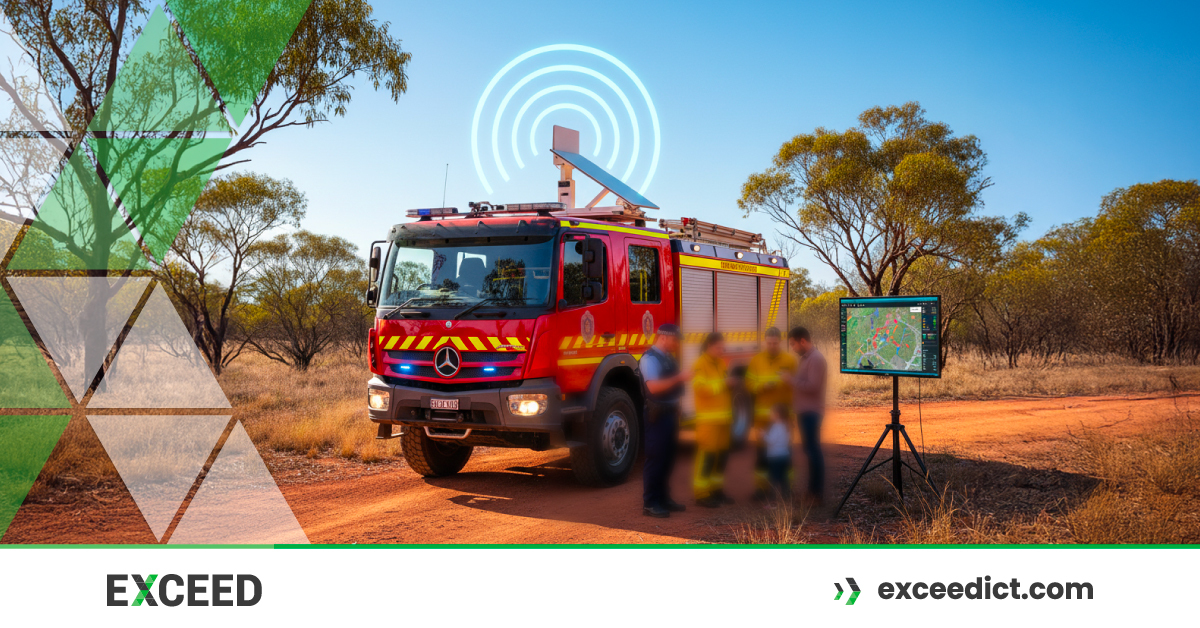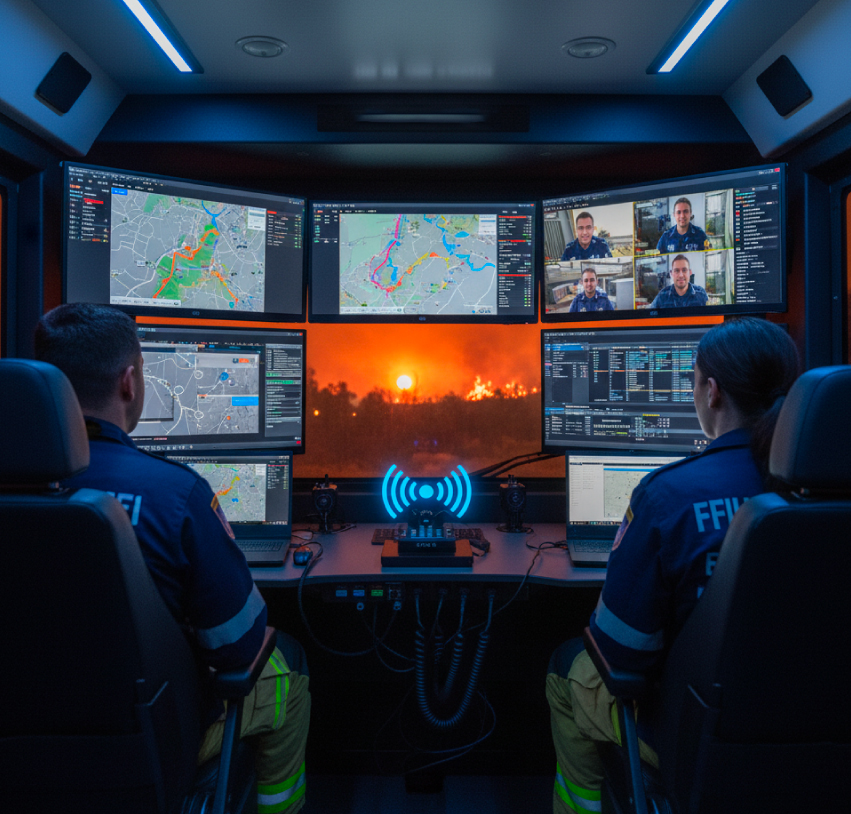
In Australia, communication is everything during a disaster. Whether it’s bushfires, floods, or other emergencies, the ability for first responders to stay connected can mean the difference between life and death. To strengthen resilience, the NSW Rural Fire Service (RFS) is adopting a groundbreaking innovation known as Vehicle as a Node (VaaN).
VaaN transforms ordinary emergency service vehicles into mobile communications hubs, ensuring reliable connectivity even when traditional networks fail. By combining satellite internet (such as Starlink) with 4G/5G cellular services, VaaN is reshaping how emergency services operate in remote regions and during disasters.
What is Vehicle as a Node (VaaN)?

VaaN is the concept of using vehicles as mobile, resilient connectivity nodes. Instead of relying solely on fixed infrastructure like mobile towers, emergency vehicles are equipped with advanced technology that allows them to act as portable communications centres.
The technology integrates:
- Low-Earth Orbit (LEO) satellites like Starlink for high-speed satellite internet.
- 4G/5G cellular technology for fast local connectivity when coverage is available.
- Onboard systems that broadcast Wi-Fi hotspots, allowing multiple devices and personnel to connect.
This hybrid design ensures that when one network goes down, another can take over, guaranteeing continuous communication.
How VaaN Works in Practice?
VaaN technology brings several practical features to the field:
- Hybrid Connectivity – Combines satellite and cellular signals for redundancy.
- Mobile Wi-Fi Hotspots – Vehicles create local networks, supporting other responders and even local communities.
- Real-Time Data Sharing – Enables live video streaming, geo-tracking, and data uploads for better situational awareness.
- Resilient Backup – Acts as a critical failover when public safety networks or mobile towers are damaged.
For first responders, this means uninterrupted communication, no matter how remote the location or how severe the disaster.
Key Applications in Australia
The most high-profile use of VaaN in Australia is with the NSW Rural Fire Service (RFS). The government has announced plans to retrofit more than 5,000 RFS vehicles with VaaN technology, including Starlink terminals and 4G/5G systems.
Key applications include:
- Bushfire Response – Ensuring firefighters maintain real-time communication in fire zones.
- Remote Operations – Keeping teams connected in rural areas with little or no existing coverage.
- Disaster Recovery – Acting as temporary Wi-Fi hubs for communities cut off by disasters.
- Critical Coordination – Supporting police, ambulance, and other emergency services during joint operations.
Benefits of VaaN Technology
The advantages of Vehicle as a Node extend beyond just connectivity:
- Improved Safety – First responders can call for help and access live updates.
- Better Coordination – Teams can share real-time intelligence and map updates.
- Increased Efficiency – High-speed connections enable quicker decision-making and resource allocation.
- Resilient Infrastructure – Provides backup when existing communication networks are down.
For communities, it means faster response times and access to emergency Wi-Fi when traditional infrastructure is disrupted.
Challenges and Considerations
While VaaN offers major benefits, there are some challenges to consider:
- Deployment Costs – Retrofitting thousands of vehicles requires significant investment.
- Network Security – Protecting sensitive data from cyber threats is critical.
- Training – Staff must be trained to operate and troubleshoot the systems.
- Environmental Durability – Equipment must perform reliably under extreme heat, smoke, dust, and floods.
These challenges highlight the need for proper planning and continuous improvement in implementation.
The Future of VaaN in Australia
Looking ahead, VaaN could extend beyond firefighting and disaster response:
- Other Emergency Services – Police, ambulance, and SES could adopt VaaN for improved connectivity.
- Defence and Military – Portable communications hubs for field operations.
- Mining and Remote Healthcare – Supporting industries and communities in isolated regions.
As Australia faces growing climate risks, VaaN is set to play a vital role in national resilience.
Conclusion
Vehicle as a Node (VaaN) is transforming how emergency communications work in Australia. By turning NSW RFS vehicles into mobile communications hubs powered by Starlink and 5G, frontline responders can stay connected even when disaster strikes.
This technology not only enhances safety and coordination but also ensures communities stay connected during crises. As adoption expands, VaaN will become a cornerstone of Australia’s strategy to protect lives, property, and infrastructure in times of emergency.
We Also Provide
Expense Management, Telecoms Expense Management, Device Deployment, Mobile Fleet management, Telstra enterprise Mobility, Telstra mobility Managed Services.
Improve Business Core values, Business Consulting, Network Management, Telstra Expense Management and many more Services.
Check our Services And Solutions.
Find Us (Exceed ICT) on Google map. Give us a call at 1300 832 639.


